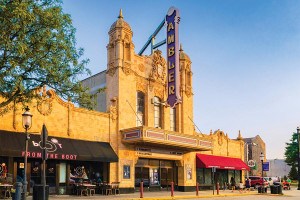New York to Philly Among Largest Metro-to-Metro Migration Flows, Says Census Bureau

Anjan Chatterjee | Flickr
Feel like you’re always running into former New York denizens? It’s not surprising given that new statistics released by the U.S. Census Bureau show the New York to Philadelphia mobility train to be one of the largest metro-to-metro flows in the country.
But let’s back up a second.
According to the Census Bureau press release regarding the new figures, the stats examine the overall metro-to-metro mobility within the United States and Puerto Rico using data gathered by the American Community Survey between 2009 and 2013. The numbers reveal that nearly 18 percent of all movers relocated to a different metropolitan area in the last year – that’s about 8.5 million people packing up their stuff and saying sayonara to their old home.
As mentioned earlier, Philly’s metro-to-metro inbound mobility proved in large part to be dominated by New Yorkers, with up to 26,957 per year moving to the Greater Philadelphia Metro during that time. We’ve known this has been happening for awhile, so Property dug a little deeper to find the next two metros whose residents up and left for Philly.
The results? An estimated 5,182 folks from the Washington-Arlington-Alexandria Metro Area moved to our neck of the woods during that time as well, as did almost 4,759 from the Baltimore-Columbia-Towson Metro Area. Interestingly, included in the metro-to-metro chart were international regions, with Philly’s largest influx of residents from abroad hailing from Asia for an estimated 13,762.
Before you go thinking the area has been all growth and no loss, though, you should know some of these same metros had more gains in residents formerly living in the Greater Philadelphia Metro region than residents leaving it: the metro-to-metro outbound mobility data shows, for example, the Washington Metro Area welcoming an estimated 6,631 from our neck of the woods, well over what they lost to us during that same period. Similarly, the Greater Baltimore Area reeled in about 4,619 movers, almost as much as had left for Greater Philly in the first place.
Greater New York, meanwhile, took in an estimated 19,336 movers from our area.
Along with the metro stats, county-to-county mobility was also surveyed, with general findings showing that 5.4 percent of the U.S. population (about 16.7 million people) moved to a county different from the one they lived in a year earlier.
For Philadelphia County, the greatest inbound county mobility came from Delaware County (an estimated 5,478 movers), followed by Montgomery (5,162), Bucks (3,925), and Camden (1,943). Conversely, outbound county mobility data showed Philadelphia County lose out on an estimated 10,587 residents to Montco, 5,981 to Delco and 3,381 to Bucks.
Aside from the New York-to-Philly metro flow, other large ones included the Los Angeles metro area to the Riverside, Calif., metro area (90,494 movers) and the Riverside metro area to the Los Angeles metro area (54,711). More highlights can be found here.
So how exactly does knowing all this help us out? The Census Bureau writes:
Government officials and planners, as well as local businesses, use these statistics to understand residential turnover in their communities. They also use this information to plan for infrastructure for new residents when there is a trend in people arriving, or to plan programs that attract new residents or employers when there is a trend in people leaving.
Indeed, we previously reported how newcomers are a major part of the driving force behind most if not all of Philadelphia’s latest developments and efforts to spruce up. Therefore, next time you meet a fresh transplant, whether from the ‘burbs, New York or wherever else, indirectly thank them for all the pretty things Philly is getting.
- Census Bureau Reports Nearly 1 in 5 Movers Relocate to a Different Metro Area [U.S. Census Bureau]


